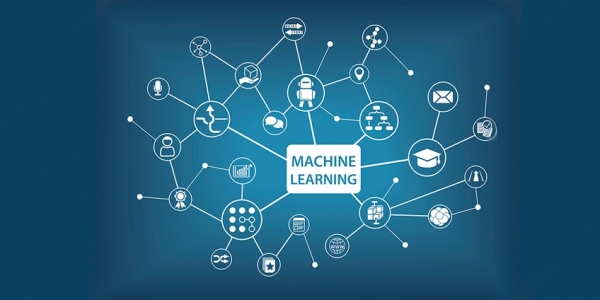Did you ever watch those television series or cartoons in which there were robots interacting with people? Nowadays, that is not so far from reality. Machine learning is one of those scientific fields of Artificial Intelligence aiming at creating systems capable of learning by themselves.
In order for this to make sense, how does it actually work?
A machine that is able to learn is actually an “algorithm” that analyzes information, makes decisions based on that analysis, or somehow foresee what could happen in the future. These systems are intended to automatically enhance themselves over time, without human intervention.
1. How can Machine learning help us?
The keyword when it comes to machine learning is “patterns detection”. For example, when it comes to a services company that has a database of clients —purchases, plans, daily consumption, changes of plans, etc.,— there might be certain patterns in the decision that may indicate the possible future decisions of the clients like changing to the competition.

But humans are not able to analyze in a reasonable period of time the tones of information in the database of the clients. That’s where machine learning comes in to analyze behavior patterns through provided variables, foresee the possibilities, and take a specific course of action to somehow increase customer loyalty.
2. Fields of action
There are many activities taking advantage of this technology, like online purchases. Have you ever noticed how while you are surfing the internet you can see personalized suggestions for purchase according to your own tastes and interests? It’s because there’s an algorithm there in analyzing your behavior patterns —keyword searches, the websites you have visited, recent purchases— to lead you to make a decision with a degree of certainty.
The applications of these algorithms can extend to so many other activities such as fraud detection, potential clients selection, predict city traffic, make a medical diagnosis, detect faults in technological equipment, etc.
3. Types of machine learning
Based on the complexity of the machine learning analysis, we can classify them into three categories:
a) Supervised learning.
This kind of algorithms depends mainly on previously labeled data. It can be the recognition of images like a car or an airplane. It has more to do with an automation process of problems we’ve already solved, but don’t want to repeat the process over and over again. Examples of these algorithms are voice recognition and spam detection.
b) Unsupervised learning.
In this case, the computer is not given previously labeled data. But it is provided with a tone of information about the features of the object of analysis (like the parts of a car) so that it determines what it is. Examples of this are information collectors and grammar checkers since they analyze morphology in sentences.
c) Reinforcement learning.
The machine learns by trial and error in different situations. It might know beforehand the results, but don’t know the course of action to achieve them. So the algorithm gradually gains experience from the success patterns in order to keep repeating them and improve them until the results are reliable.
These are more complex algorithms that are applied to engineering developments like the automatic navigation of an automobile, and other programs related to decision making.
As we could appreciate, machine learning is a technological tool that can help companies but individuals as well. We have already seen some of this technologies not only in the user interface of a computer but as a subject interacting directly with people or doing certain tasks for us. Machine learning is intended to somehow make our lives easier.
Frank Wild is author of the article. Frank is a journalist and guest writer at neural network stock prediction. He also likes to write on technology and scientific topics.




